The Mud Alderfly (Sialis lutaria) is the most common of the three species found in slow-flowing rivers and stillwaters throughout the UK. It’s one of the most widespread flies because of its ability to survive in acidic to alkaline water environments.
Alderfly life cycle and habitat
The adult fly is a large, dark brown insect with veined wings folded over its body. They emerge from ponds, rivers, and lakes from late spring to early summer and are often spotted resting on bankside vegetation.
Adult fly:

- Length 10-20 mm
- Wingspan 22-34 mm
- Overall colour dark brown
- Brownish hairless wings with darker veins
- 2 long antennae
At rest, its wings fold over the body tent fashion, not unlike a caddis. It has a broad head with eyes set on either side. It has long segmented antennae that extend from the front of the head.
Adult alderflies are distinguished from stoneflies by the absence of tail elements.
After mating at night, females lay large numbers of eggs on overhanging vegetation, where the larvae hatch and drop or crawl into the pond or river. Therefore, adult Alderflies are of little interest to trout unless they get blown onto the water.
Alderfly larva
The larvae are aquatic carnivores that live in the silt at the bottom of ponds and slow-flowing rivers.

- length 14 to 17 mm
- light-tan brown in colour
- pronounced pincer-like jaws
- 3 pair of legs
- Abdominal sections carry breathing filaments on either side
- a single tail filament
It takes about 2 years for the larvae to grow and mature in their underwater environment.
In spring, mature larvae crawl out of the water onto land where they pupate in damp earth, under rocks and plant litter. Pupation takes a couple of weeks to form the next generation of Alderflies.
Now, let’s take a look at the fly pattern I use…
How to fish the Alderfly
The adult flies can be seen in abundance on the lower reaches of rivers and from late spring to early summer. For example, from Bangor-On-Dee downriver on the Welsh Dee.
Flies don’t hatch from the water. Instead, the larvae swim ashore and crawl out onto the bank. As such, mature larvae are of more interest to trout than adult flies.
In fact, it’s very rare to see trout taking Alderflies that have been blown onto the river or lake. Therefore, I don’t fish any dry fly patterns.
Instead…
I’ve found fishing the following wet fly pattern slowly through the shallows can be deadly, particularly around weeded and submerged vegetation.
How to tie the wet Alderfly
Tying material list:
- Hook – #14 Kamasan BL402
- Thread – Black 8/0
- Tag & rib – Olive wire
- Body – 50/50 mix of black & claret seals fur
- Hackle – black hen
- Wing – hen pheasant tail
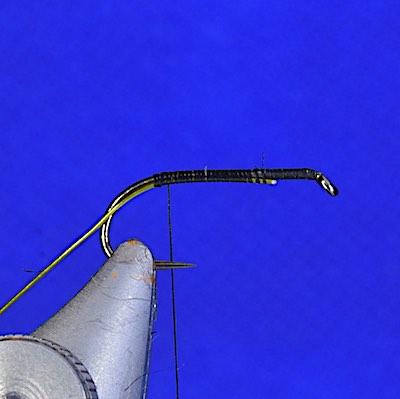
Step 1. Place the hook firmly in the vice and start the thread behind the eye. Wind the thread in touching turns down the hook shank trapping in the olive wire.

Step 2. Form a tag with 3 turns of wire. Take a 50/50 mix of black/claret seal fur and apply the dubbing to the waxed thread.
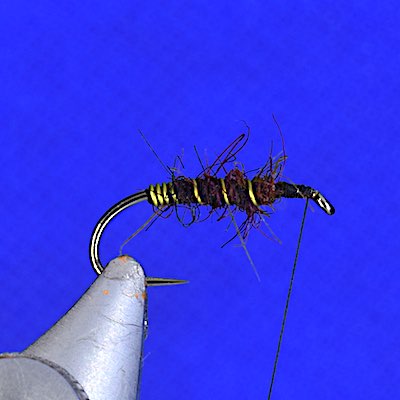
Step 3. Form a slim body using the dubbed thread. Then wind the rib over the body and tie it off with the thread.
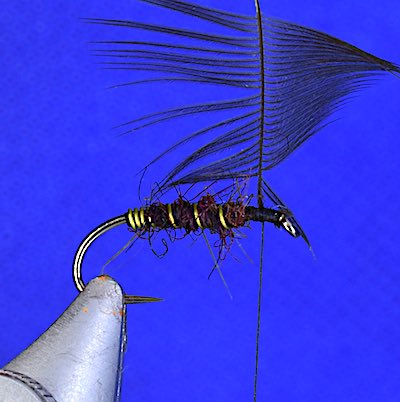
Step 4. Prepare a black hen hackle and secure it to the hook with the thread.
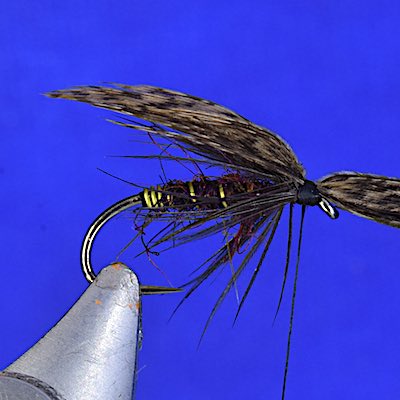
Step 5. Cut a 1 cm slip of hen pheasant wing feature and fold to form the wing. Tie in the wing over the black hackle.

Step 6. Trim the waste end of the wing and form a wing with the black thread. Whip finish and varnish the head.
Equipment-wise for wet fly fishing…
I use a 9ft 5# rod loaded with a floating line and a 12ft 5X copolymer leader for a single fly set-up.
If I’m fishing a team of three flies, the leader is cut back to 7 ft from the but end. Then two 3 ft lengths of 3 lb copolymer are added to form 2 droppers.
On rivers, I found it’s best to fish the shallow margins by casting the wet flies upstream and allowing them to drift back. Whereas, when fishing stillwaters I twitch the fly along margins and weed beds.
It is important to keep a low profile and approach the water in stealth mode because trout are easy to spook in shallow water.
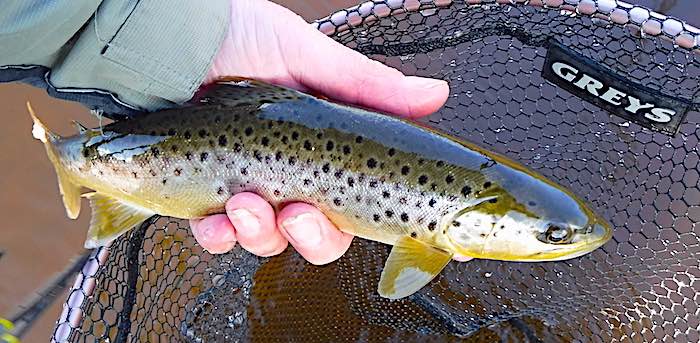
Finally, I hope this article stimulates you to tie the Alderfly and test it on your local fishing location or take a trip to fish the Welsh Dee at Bangor-On-Dee.
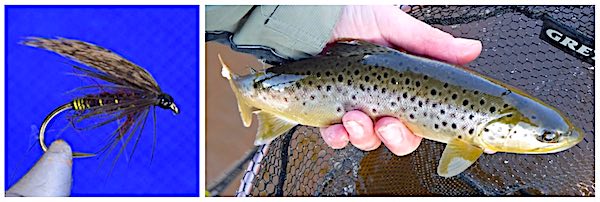
Another excellent post! The small still water I fish has large hatches of alder flies in May. Created my own dry pattern for next time I manage to go. Thank you for the brilliant info.
Hi Rob,
Great to hear you liked the article.
Would be great if you could share your fly pattern.
Cheers, Andrew
Great pattern to tie and fish
Thanks for the tips , very informative
Cheers
very nice article Andrew ,I have fished with these and had
a good response from the trout before
and will continue to use
thanks for the article
Hi Colin,
Great to hear you enjoyed the article.
Cheers, Andrew
Thanks Andrew…..great blog …
Cheers
A very nice pattern. I suspect it may well be productive in virtually any fishable water.
Should be,
Comes the moment comes the fly! I was fishing my local stillwater last night and the trout were cruising along the edges slurping down something – I couldn’t tell – but I nabbed one with a March Brown pattern which might have just about resembled an alder larvae. I’ll be tying up a few of these soon, also to try out on my river as well.
Thanks Andrew, keep ’em coming!
I hope they work for you. Andrew